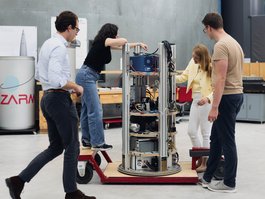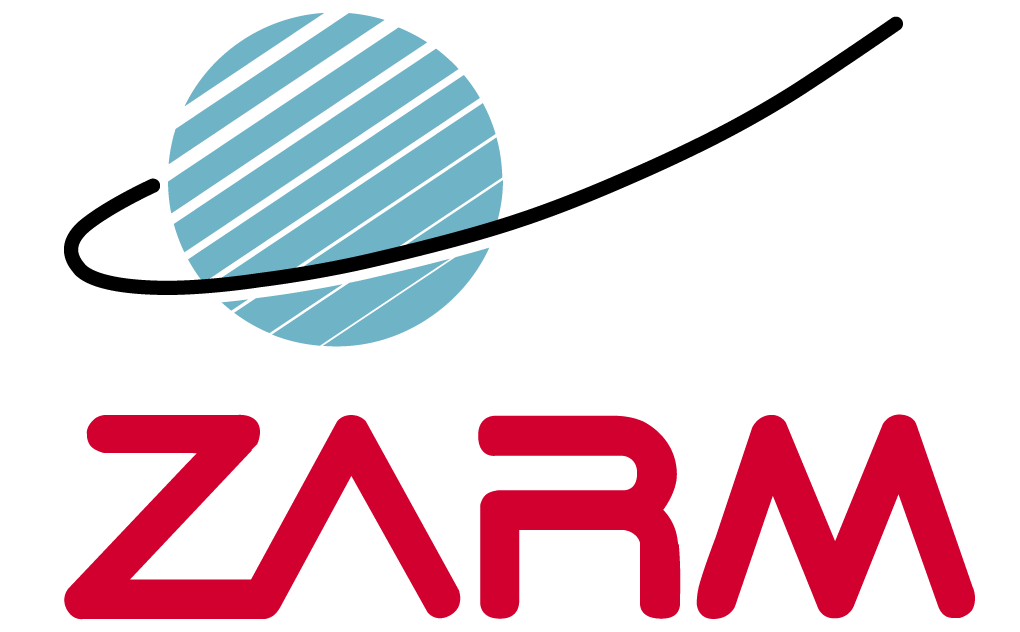Photoelectrocatalysis for Terrestrial and Space Applications
ABOUT OUR RESEARCH
Our group is focussed on the development, analysis and optimization of new systems to produce valuable chemicals and oxygen for human space exploration missions. These systems mimic the most important pieces of photosynthesis, nature's go-to solar energy conversion mechanism. In the conditions met outside Earth's atmosphere this energy conversion is becoming much more challenging and new strategies are required.
Green technologies beyond Earth and back?
The research insights into artificial photosynthesis and photoelectrocatalysis at ZARM can be applied not only to space technology, but also to drive advances in the green energy transition on Earth. The key lies in the efficient, direct use of solar energy, especially for the production of fuels such as hydrogen, a promising energy carrier for the future. As renewable fuels gain interest, the results of the research at ZARM could help to improve the efficiency of solar energy conversion and storage. As a result, this technology would not only benefit space missions, but also help the development of environmentally friendly energy systems and the reduction of CO2 emissions on our planet.
Our fields of research
- The development of alternative, passive phase separation systems for gas bubble detachment from electrode surfaces in microgravity (e.g., via electrocatalyst nanostructures or the utilization of magnetically-induced buoyancy).
- The simulation of (photo-)electrochemical devices in microgravity using COMSOL Multiphysics, OpenFOAM and numerical methods, specifically focusing on simulating mass transfer in the electrolyte and gas bubble evolution.
- The (photo-)electrodeposition of metals on (photo-)electrodes in microgravity and the investigation of the impact gravity has on the nucleation and growth of metal layers and the metal nanotopography.
CONTACT

Efficient Solar-Driven Oxygen and Fuel Production Utilizing Magnetically-Induced Buoyancy for Life Support During Long-Term Space Travel
Our research group has together with Prof. Álvaro Romero-Calvo, head of the Low-Gravity Science and Technology Lab at GeorgiaTech (USA), the opportunity to fly our experiments on a Sounding Rocket to the borders of space! The project "Efficient Solar-Driven Oxygen and Fuel Production Utilizing Magnetically-Induced Buoyancy for Life Support During Long-Term Space Travel" was selected by ESA to fly between 2024-2025.
Our team will provide a proof-of-concept microgravity test of an autonomously operating, efficient and monolithic solar water-splitting device for oxygen and hydrogen production which could complement currently existing life support technologies. In order to achieve efficient and stable gas production, we will investigate two key mechanisms to successfully detach hydrogen and oxygen gas bubbles from the electrode surface and direct them through the electrolyte solution to a gas collection point: i) magnetically-induced buoyancy, and (ii) hydrophilic electrocatalyst structures. The longer microgravity time provided by the sounding rocket experiment will be crucial to successfully demonstrate the effect of both mechanisms.
Our results will not only be key for demonstrating the possibility of utilizing photoelectrochemical devices in space which could be extended e.g., to carbon dioxide removal and chemical synthesis – they will also be instrumental in optimizing electrolyzer systems, phase separators, and boiling processes in reduced gravitation.











The list below shows the latest 25 publications of this research group. For the complete, searchable list of ZARM publications, please click more



